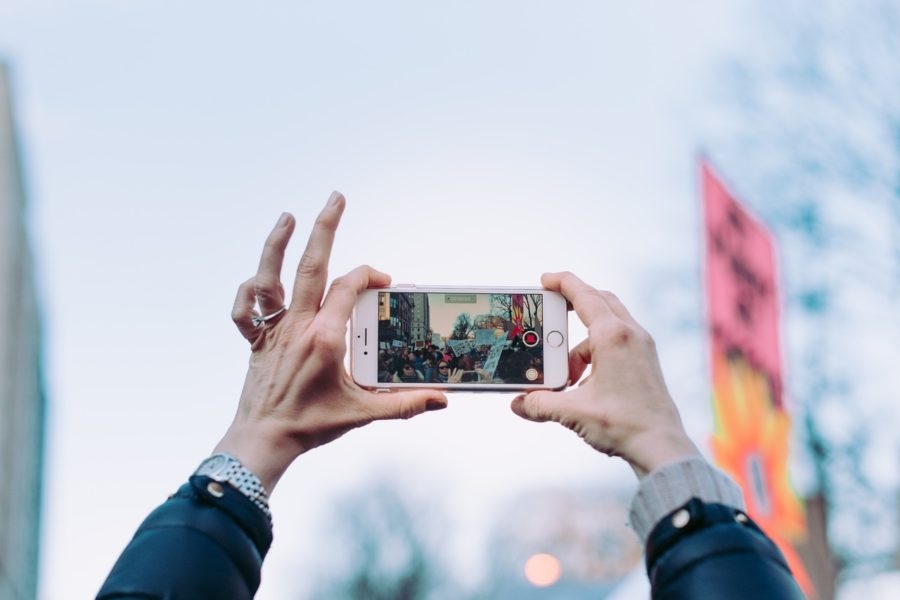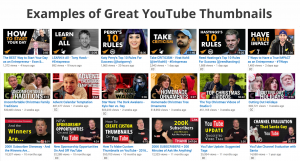— April 13, 2018

StockSnap / Pixabay
With 360° video now available on all the big social media platforms (Facebook offered it in 2015, Twitter followed suit in 2016 while Vimeo and YouTube made in available in 2017) more and more businesses are getting in this tech space to create an immersive storytelling experience for their followers.
And consumers are just as hooked.
Research by YuMe has shown that around a third of consumers are more likely to engage with an immersive video ad, while separate research from Advrtas shows 90% believe that video content is better in 360 than the traditional format.
In this article, I want to look specifically at 360 video and how it is can be a relatively easier and less expensive format in which to produce high quality and engaging brand film compared to other immersive tech like Virtual Reality (VR) and Augmented Reality (AR). With that in mind, let’s start by discussing the difference.
360° or VR?
It’s not uncommon for 360 video to get lumped into a broader category of virtual reality (VR). Whilst there is no definitive right and wrong with this (VR can mean different things to different people after all) 360° video should be seen as a distinct field in the growing field of immersive video that also includes Augmented Reality (AR).
As with anything new in the tech space, confusion tends to ensue especially with nomenclature — HD Radio does not mean the same as digital transmission; a semi-autonomous car does not actually mean real autonomy.
The same goes for 360° video and virtual reality. Whilst both are products of the evolution of video, VR format needs the aid of high-powered headgear and other accessories to truly experience what it has to offer.
360° videos, on the other hand, are simply photos or videos of a given environment, in which the viewer can swivel and move in three dimensions so as to create a more immersive and controllable experience. Unlike VR and AR though the viewer cannot influence the nature of the content and as such is still a passive observer.
How 360° Videos Works
Producing 360° videos involves an advanced video recording process. Videographers need to set up anywhere between six to 10 cameras aimed at different directions, making sure each location is accurately covered. Every camera should function during the recording, as a faulty one may ruin the entire footage. The most critical part is starting all cameras at the same time so the end result will be coherent.
Afterwards, the footage from each camera is then processed to create a 360° video.
Advantages of 360 Videos:
- Immersive storytelling
- Interactive video session between you and your end users, effectively grabbing their attention
- Present your ideas, products or services (as in the case of construction sites, for example) in a way that will make it easier for your viewers to understand and appreciate.
Disadvantages of 360 Videos:
- There is a lot of complexity involved in creating just one 360 video, especially managing the cameras from all angles and making sure each shot is accurate.
- More expensive to produce than traditional video formats.
The Process of Creating 360 Videos
360° videos, as advantageous as they may be, involves a far more complicated process than shooting a location, editing it, and uploading it on YouTube. However, consider it like any other content format that you produce—you need to be strategic with its creation and promotion to further your brand’s goals.
Step #1: Set your goals
Riding on the popularity of this video format is not a good enough reason to actually do it.
You have to know why you need one (what outcome will it generate to your business?) and if your content will actually be enhanced using this format.
You need to:
-
Understand the language
According to Eric Cheng, Facebook’s head of immersive media, people need to figure out the storytelling language of 360° videos. Without understanding this crucial factor, you may end up with your end users looking at the wrong direction when the story is happening in another direction. Or they may be distracted when you tell them to turn around and refuse to continue watching the video.
That said, 360° videos are especially effective for travel brands or for those who want to demonstrate unique experiences to their followers.
-
Know what to expect
Keep in mind that producing 360° videos is a huge task. It takes almost the entire day just to process the all the footage you have (sometimes more) so make sure that you factor in realistic timelines when creating this kind of video content.
Step #2: Choose the right content or story to tell
Too many brands make the mistake of sticking a 360° video camera in the middle of an event or a location, then just letting it run. It’s important to figure out what the experience looks like prior to producing produce your videos, so as to produce the best results.
To save your brand from lazy storytelling, you should:
- Give your end users a sense of autonomy, but direct them to where you want them to look. If you’re recording an event, let them “look around” the venue, but also have something specific that will grab their attention (e.g. the speaker, a particular building, etc). This way, they won’t miss your intended story.
- Give your end users a sense of how to use your product or service. Automotive and real estate are two industries that work really well with 360° videos (as you can see from the Ford Mustang video above), since this kind of content can give end users a feel of driving new cars or living inside new properties—all from their mobile devices or computers.
Step #3: Use the right camera
A good 360° video does not need the most expensive camera out in the market. It all comes down to the content itself and the delivery. That said, you, however, still need the right equipment to pull off a professional looking 360 film.
A few things you need to keep in mind include:
-
- Your budget is an obvious place to start. Cutting corners in 360 video production isn’t an option.
- The need for any additional gear.
- Knowing the difference between monoscopic (produces 360° videos in a 2D image curved into a spherical space) and stereoscopic (different image shown to the left and the right eye as in the case of VR videos). Most 360° videos are monoscopic.
- Entry level cameras are cheaper but high on experimental interest (e.g. Ricoh Theta S and Samsung Gear 360°, both of which produce monoscopic videos).
- Prosumer cameras for better quality but still within budget range (e.g. the Vuze which delivers 4K video, as well as stereoscopic features).
- Pro cameras are ideal for filmmakers, as they deliver the best quality. These are, however, the most expensive in the market (e.g. Nokia Ozo, GoPro Odyssey).
Step #4: Edit
After recording your footage, you need to stitch together the scenes you’ve captured. Apart from needing a robust computer with a lot of RAM, you also need some pretty decent editing software. A few software packages worth checking out are Adobo Premiere Pro, Kolor Autopano Video and VideoStitch Studio.
Make sure that the program you choose supports the file formats your camera produces and can deliver the results you want.
Step #5: Publish and promote your video
Lastly, you need your brand followers to experience your video. Social media is a popular platform to share and promote it, given that most of the major sites now support 360° videos. Start with finding out where your target market usually hangs out online and then try to find similar examples on this platform to give you an idea of what’s out there and what you’re up against.
Applications of 360 Video
- Increase brand awareness
Cherry Marketing Institute’s campaign for Choose Cherries involved a 360° bedroom tour. Throughout the video, a narrator doles out tips on how to have the ideal sleeping arrangement, one of which includes drinking a glass of cherry juice.
- Drive deeper engagement
A recent study by Google revealed that 360° videos drove 41% more earned actions than traditional ads. Although completion rate is lower, 360° videos also had better click-through rates.
- Connect content to purchase points
Lowe’s, a retail and home improvement store chain, brilliantly mixed the immersive nature of 360° videos and the elements of e-commerce via their series of instructional DIY 360° videos. To encourage people to buy, each instructional video features one of their products and an option to click through to a landing page where they can purchase.
Young Yet Promising
The 360° video technology is still very young, so expect better gears and more storytelling trends to come out in the next years. While it may require a learning curve to be successfully integrated to your business, it is proving to show great returns and strong engagement levels. Do, however, keep in mind that your goal to create this kind of video is to fit your brand and your audience; not to merely ride a new trend.
Digital & Social Articles on Business 2 Community
(32)




